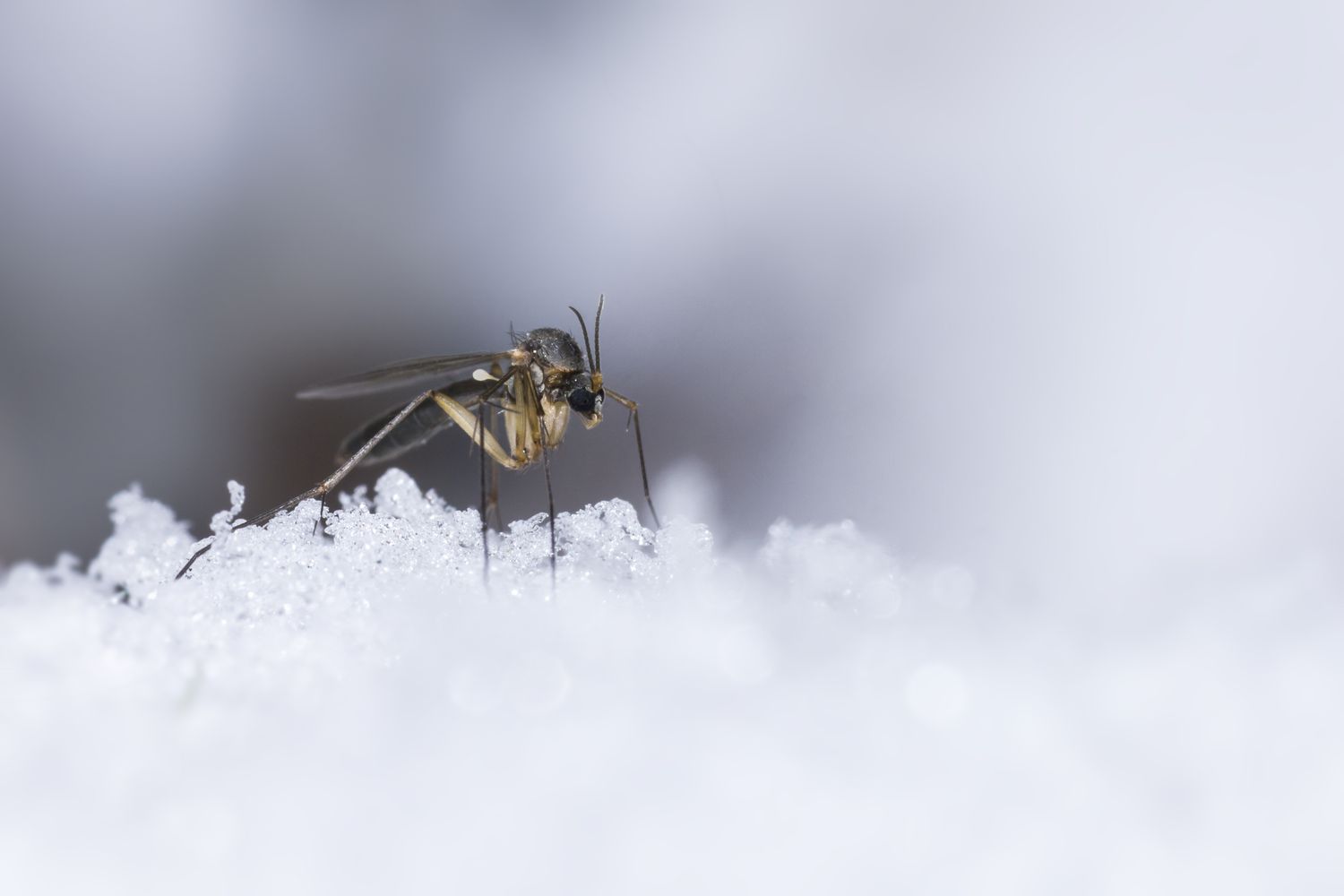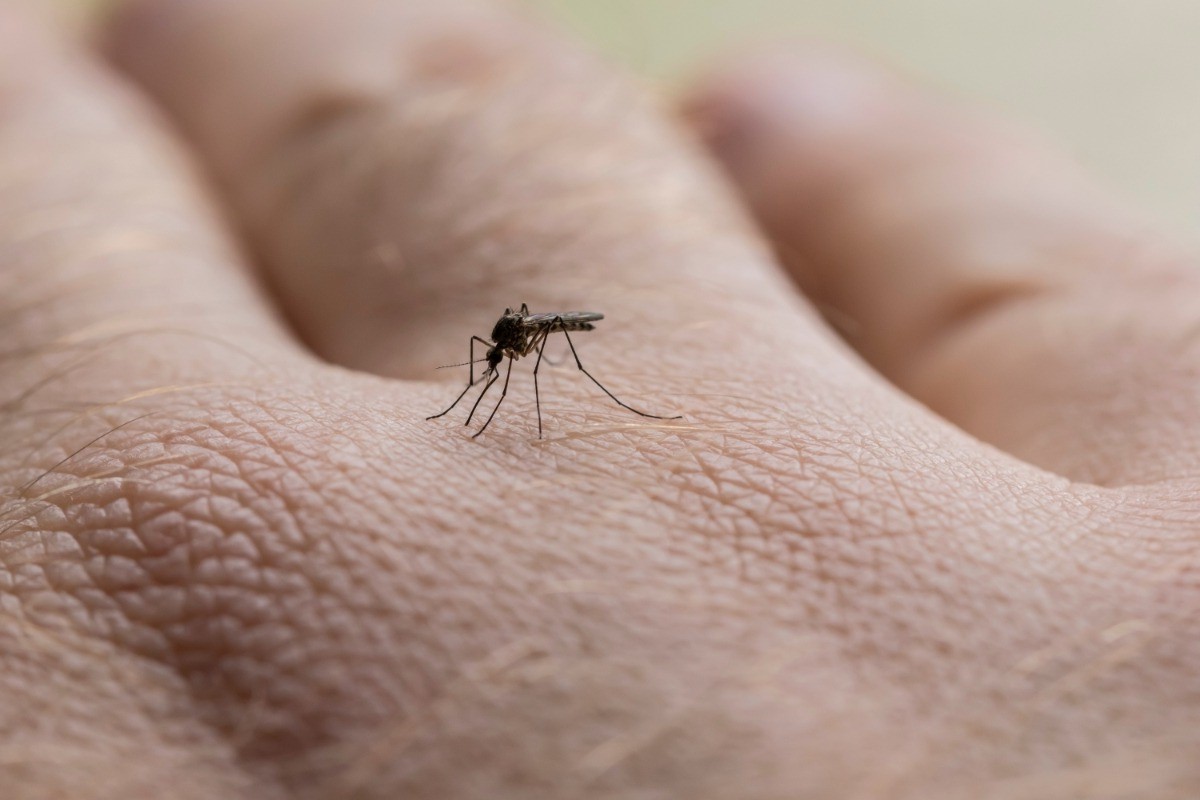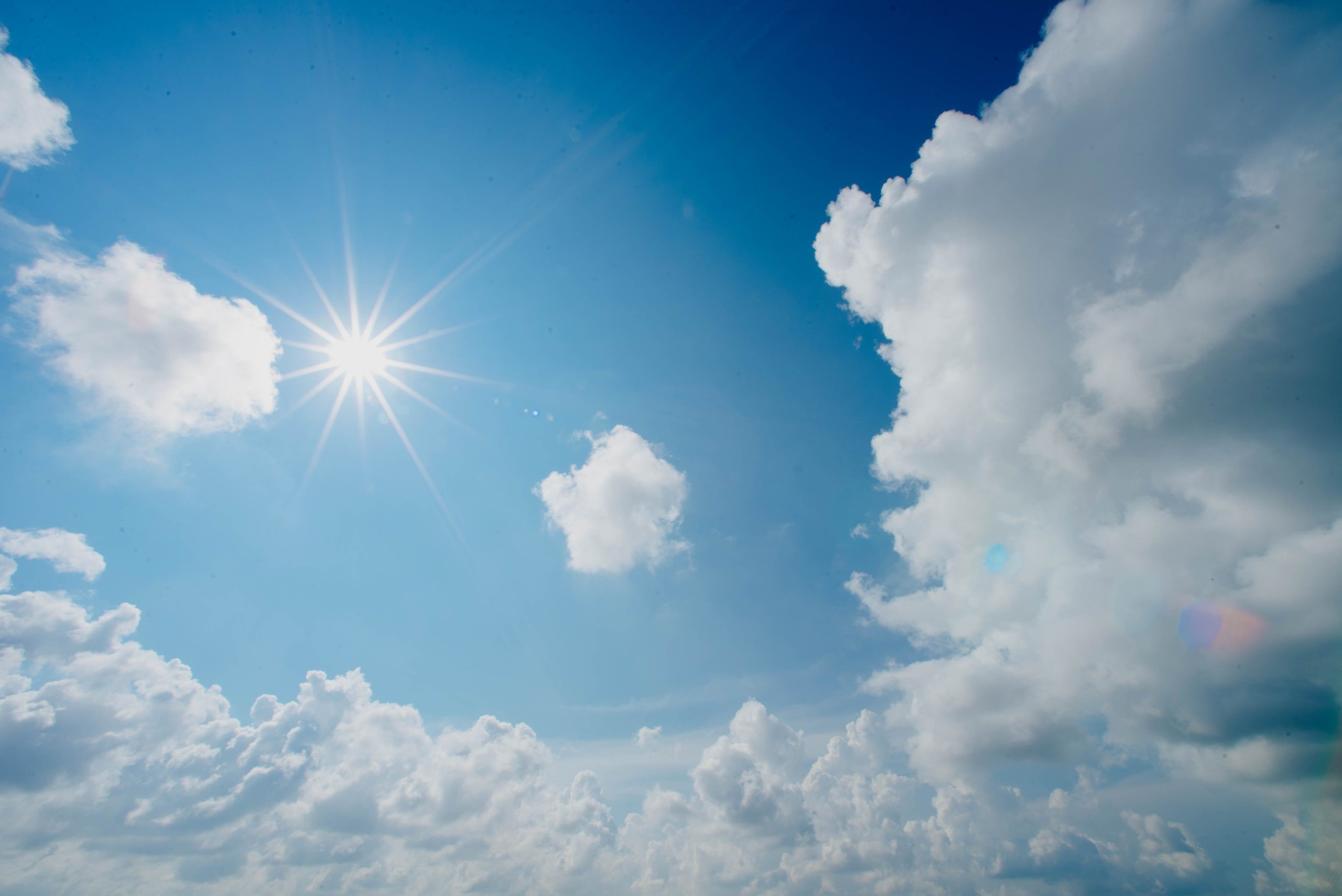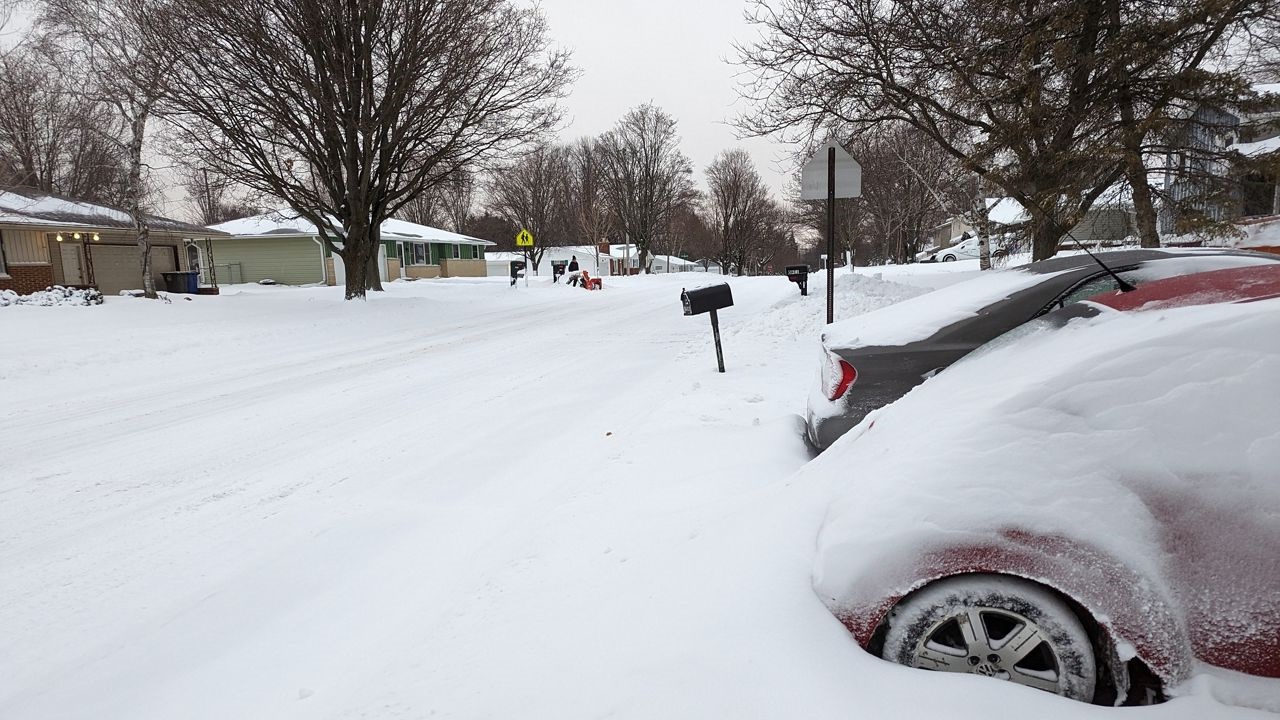Home>Science & Environment>Mosquitoes’ Winter Habitat And Behavior Explained


Science & Environment
Mosquitoes’ Winter Habitat And Behavior Explained
Published: February 19, 2024
Discover how mosquitoes survive the winter and their behavior in cold climates. Explore the science and environment behind their winter habitat.
(Many of the links in this article redirect to a specific reviewed product. Your purchase of these products through affiliate links helps to generate commission for Temperatures.com, at no extra cost. Learn more)
Table of Contents
Understanding Mosquitoes' Winter Survival Strategies
Mosquitoes are notorious for their persistence, even in the face of harsh winter conditions. To survive the cold, these resilient insects have developed a range of strategies that enable them to endure the winter months. Understanding these survival tactics sheds light on the remarkable adaptability of mosquitoes.
-
Diapause: Mosquitoes enter a state of diapause, a form of dormancy, to cope with the winter. During diapause, their metabolic activities slow down significantly, allowing them to conserve energy and endure the scarcity of food sources. This state of suspended animation enables mosquitoes to withstand the adverse environmental conditions until more favorable circumstances arise.
-
Seeking Shelter: Mosquitoes actively seek out sheltered locations to escape the harsh winter elements. Common hiding spots include hollow logs, animal burrows, and even human-made structures such as basements and crawl spaces. These sheltered environments provide mosquitoes with the protection they need to survive the cold and emerge once temperatures become more conducive to their activity.
-
Utilizing Microhabitats: Certain mosquito species take advantage of microhabitats that offer relatively warmer conditions compared to the surrounding environment. For instance, some species seek refuge in areas with geothermal activity, such as hot springs or volcanic vents, where the ambient temperature remains relatively stable throughout the year. By exploiting these microhabitats, mosquitoes can maintain their metabolic functions and increase their chances of survival during the winter.
-
Egg Survival: Mosquitoes employ a remarkable strategy to ensure the survival of their offspring during the winter. Female mosquitoes lay their eggs in locations that are likely to remain undisturbed and moist throughout the cold season. These eggs enter a state of suspended development, known as quiescence, until the arrival of warmer temperatures triggers their hatching. This ensures the continuity of the mosquito population despite the challenges posed by winter.
-
Behavioral Adaptations: Some mosquito species exhibit behavioral adaptations to cope with winter conditions. For instance, certain species alter their feeding patterns and become more opportunistic in seeking out alternative food sources. Additionally, they may adjust their activity patterns to coincide with periods of milder weather, allowing them to maximize their chances of survival while minimizing exposure to harsh environmental conditions.
Understanding these winter survival strategies illuminates the remarkable resilience of mosquitoes in the face of challenging conditions. By employing a combination of physiological, behavioral, and ecological adaptations, mosquitoes have honed their ability to endure the rigors of winter, ensuring their continued presence in various ecosystems.
The Role of Hibernation in Mosquitoes' Winter Behavior
Mosquitoes' ability to survive the winter months is intricately linked to their utilization of hibernation as a key survival strategy. Hibernation, a state of dormancy characterized by reduced metabolic activity, plays a pivotal role in enabling mosquitoes to endure the adverse environmental conditions associated with winter.
During hibernation, mosquitoes undergo a series of physiological changes that allow them to conserve energy and withstand the scarcity of food sources. This metabolic slowdown is essential for their survival, as it enables them to endure prolonged periods of cold temperatures and limited resources. By entering a state of dormancy, mosquitoes can minimize their energy expenditure, thereby increasing their chances of surviving until more favorable conditions prevail.
Hibernation also serves as a mechanism for mosquitoes to evade the challenges posed by winter weather. By seeking out sheltered locations such as hollow logs, animal burrows, or human-made structures, mosquitoes create a conducive environment for hibernation. These sheltered sites provide protection from the harsh elements, allowing mosquitoes to minimize their exposure to extreme cold and other environmental stressors.
Furthermore, hibernation plays a crucial role in the life cycle of mosquitoes, particularly in ensuring the continuity of the species. Female mosquitoes, in preparation for the winter, lay their eggs in locations that are likely to remain undisturbed and moist. These eggs enter a state of suspended development, known as quiescence, until the arrival of warmer temperatures triggers their hatching. This strategic placement of eggs ensures the perpetuation of the mosquito population, despite the challenges presented by winter.
The role of hibernation in mosquitoes' winter behavior extends beyond individual survival to encompass the broader ecological dynamics within their habitats. By conserving energy and minimizing their activity during the winter, mosquitoes contribute to the intricate balance of predator-prey relationships and ecological interactions. This underscores the significance of hibernation as a fundamental aspect of mosquitoes' winter behavior, with far-reaching implications for their role within diverse ecosystems.
In essence, hibernation serves as a cornerstone of mosquitoes' winter survival strategy, enabling them to endure the challenges of the cold season while ensuring the continuity of their species. By harnessing the adaptive power of hibernation, mosquitoes exemplify nature's remarkable capacity to thrive in the face of adversity, underscoring the intricate interplay between biological adaptations and environmental conditions.
Identifying Common Winter Habitats for Mosquitoes
During the winter months, mosquitoes exhibit a remarkable ability to seek out and inhabit various shelters that provide them with the necessary protection and resources to survive the harsh environmental conditions. Understanding these common winter habitats sheds light on the resourcefulness of mosquitoes in adapting to the challenges posed by the cold season.
-
Sheltered Natural Environments: Mosquitoes often seek refuge in natural shelters such as hollow logs, tree cavities, and animal burrows. These secluded spaces offer protection from the elements and serve as conducive sites for hibernation. Additionally, the relatively stable microclimates within these natural shelters enable mosquitoes to conserve energy and endure the winter months.
-
Human-Made Structures: Mosquitoes are adept at exploiting human-made structures to survive the winter. Basements, crawl spaces, and abandoned buildings provide ideal habitats for mosquitoes during the cold season. These structures offer insulation from the external environment and may retain residual heat, creating favorable conditions for mosquitoes to hibernate and await the arrival of spring.
-
Water Bodies and Wetlands: Certain mosquito species utilize water bodies and wetlands as winter habitats. Shallow ponds, marshes, and areas with standing water serve as overwintering sites for mosquito larvae and adults. The insulating properties of water, combined with the availability of organic matter for sustenance, make these habitats attractive for mosquitoes seeking to endure the winter.
-
Vegetation and Foliage: Mosquitoes often take advantage of dense vegetation and foliage as winter shelters. Dense shrubbery, leaf litter, and overgrown vegetation provide mosquitoes with concealment and protection from harsh weather conditions. These habitats also offer a source of moisture, essential for sustaining mosquitoes during the winter months.
-
Microhabitats with Geothermal Activity: Some mosquito species seek out microhabitats with geothermal activity, such as hot springs and volcanic vents, as winter refuges. These unique environments provide relatively stable temperatures, offering mosquitoes a haven from the extreme cold prevalent during winter. By exploiting these microhabitats, mosquitoes can maintain their metabolic functions and increase their chances of survival.
Identifying these common winter habitats for mosquitoes underscores the diverse range of environments that these resilient insects can inhabit during the cold season. By leveraging natural and human-made shelters, as well as specialized microhabitats, mosquitoes demonstrate their adaptability and resourcefulness in navigating the challenges of winter survival. This insight into their winter habitats provides valuable knowledge for understanding and managing mosquito populations in various ecosystems.
How Mosquitoes' Behavior Changes in Winter Months
During the winter months, mosquitoes undergo significant behavioral changes to adapt to the challenges posed by the cold season. These behavioral adaptations are essential for their survival and play a crucial role in ensuring the continuity of mosquito populations in various ecosystems.
-
Reduced Activity: As temperatures drop, mosquitoes exhibit a noticeable reduction in their activity levels. The cold weather inhibits their ability to fly and seek out hosts for blood meals. This decrease in activity is a strategic response to conserve energy and minimize exposure to the harsh environmental conditions prevalent during winter.
-
Altered Feeding Patterns: Mosquitoes modify their feeding patterns in response to the scarcity of available hosts and reduced metabolic rates. With fewer warm-blooded animals outdoors, mosquitoes become more opportunistic in seeking alternative food sources. Some species may feed on nectar and other plant-based resources to sustain themselves during the winter months.
-
Hibernation and Diapause: One of the most significant behavioral changes in mosquitoes during winter is their transition into hibernation and diapause. By entering a state of dormancy, mosquitoes can conserve energy and endure the scarcity of food sources. This physiological adaptation allows them to withstand the adverse environmental conditions until more favorable circumstances arise.
-
Seeking Shelter: Mosquitoes actively seek out sheltered locations to escape the harsh winter elements. Common hiding spots include hollow logs, animal burrows, and human-made structures such as basements and crawl spaces. These sheltered environments provide mosquitoes with the protection they need to survive the cold and emerge once temperatures become more conducive to their activity.
-
Egg Survival Strategies: Female mosquitoes employ strategic egg-laying behaviors to ensure the survival of their offspring during the winter. They deposit their eggs in locations that are likely to remain undisturbed and moist throughout the cold season. This ensures the continuity of the mosquito population despite the challenges posed by winter.
Understanding these behavioral changes in mosquitoes during the winter months provides valuable insights into their resilience and adaptability. By adjusting their activity levels, feeding patterns, and reproductive strategies, mosquitoes demonstrate their ability to navigate the challenges of winter survival. These behavioral adaptations underscore the remarkable capacity of mosquitoes to endure adverse environmental conditions and thrive in diverse ecosystems.














